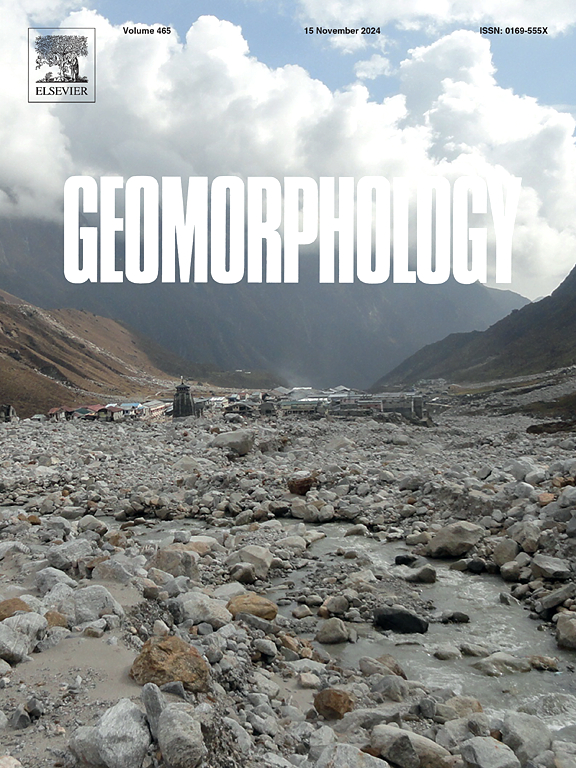Migration and cutoff of meanders in the hyperarid environment of the middle Tarim River, northwestern China
Li, Zhiwei , Yu, Guo-An , Brierley, Gary John , Wang, Zhaoyin , Jia, Yanhong
2017-01-01 null null 276(卷), null(期), (null页)
A meandering channel has developed in the middle Tarim River, the longest inland river flowing through a hyper arid environment in northwestern China. Although the drainage basin of the Tarim River extends over 1 million km(2), flow in downstream reaches is largely restricted to summer months, and irrigation pressures have made the flood season increasingly short. The planform morphology, lateral migration rate, and cutoffs of 105 meanders were analysed using multiperiod remote sensing images and field survey analyses of channel bed and bank properties and of riparian vegetation cover. Results show that planform attributes of the meandering Tarim River are similar to those found in other environments. The ratio of the channel centreline length to the neck channel width of meanders ranges between 12 and 8.1, the bend curvature (ratio of bend radius to channel width) ranges between 0.30 and 2.8, and the average deflection angle of the bend apexes is 79.9. Meander migration rates range from 1.4 to 96.7 m y(-1). From 2000 to 2013, 45 cutoffs occurred along the 400-km-long reach. As the riparian vegetation cover is sparse because of limited precipitation and because banks are comprised of dense roots, fine sand and silt materials, but lack clay, bank strength is limited and presents limited constraints upon bend movement. (C) 2016 Elsevier B.V. All rights reserved.
相关推荐
- Variations in Channel Centerline Migration Rate and Intensity of a Braided Reach in the Lower Yellow River [2017-01-01]
- Reevaluation of the aeolian sand flux from the Ulan Buh Desert into the upper Yellow River based on in situ monitoring updates [2017-01-01]
- Evolution of sandstone peak-forest landscapes - insights from quantifying erosional processes with cosmogenic nuclides [2017-01-01]
- Impacts of artificially planted vegetation on the ecological restoration of movable sand dunes in the Mugetan Desert, northeastern Qinghai-Tibet Plateau [2017-01-01]
- River network evolution and fluvial process responses to human activity in a hyper-arid environment - Case of the Tarim River in Northwest China [2017-01-01]



